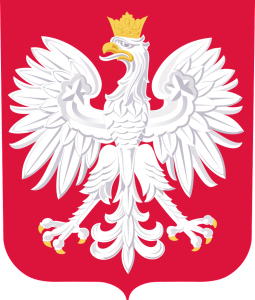By Donna Welles.
Coat of arms Poland
Poland has been a member of NATO since 1999 and a member of the European Union since 2004, although it has not yet joined the Eurozone. Poland’s language is Western Slavic, it of course is related to ancient Sanskrit and it does not use the Cyrillic alphabet. Ukrainian and Belarussian are more closely related to the Russian language than is Polish, as they are Eastern Slavic languages. Allow us to examine Poland’s East-West tendencies by virtue of its economic and social indicators.
Poland has Eastern Europe’s largest pool of armed forces personnel as of 2013, 173,000 soldiers. Belarus has 158,000 soldiers, Romania has 151,000, Ukraine has 122,000, and Bulgaria has 47,000. In 1995, Ukraine had more than half a million soldiers. Poland had 302,000, Romania had 297,000, Bulgaria had 136,000, and Belarus had 106,000.
Poland also has Eastern Europe’s largest economy. In 2014, Poland’s GDP was $548billion, the Czech Republic’s was $205billion, Romania’s was $199billion, Hungary’s was $137billion, and Ukraine’s was $132billion.
Population figures reported by the World Bank show Poland to be the second largest country in Eastern Europe. In 2014, Ukraine had 45million people, Poland had 38million, Romania had 20million, the Czech Republic had 11million, and Hungary had 10million. Of these, only the Czech Republic has seen an increase in population since 2000. Romania’s population has contracted by 11%, Ukraine’s by 8%, Hungary’s by 3%, and Poland’s by 1%.
Poland is halfway down the list per unemployment figures in Eastern Europe. In 2013, 10.3% of Poles were unemployed whereas in Macedonia unemployment was at 29%, in Bosnia at 28%, in Serbia at 22%, in Croatia at 17%, and in the Slovak Republic at 14%.
Germany is Poland’s most dominate trading partner in terms of both imports and exports. In 2014, Polish imports totaled $211billion and Polish exports totaled $209 billion. German trade accounted for 28% of Poland’s imports and 27% of Poland’s exports. British trade accounted for 3% of Poland’s imports and 7% of Poland’s exports. Russian trade accounted for 9% of Poland’s imports and 4% of Poland’s exports. Chinese trade accounted for 7% of Poland’s imports and a negligible amount of Poland’s exports.
Life expectancy in Poland is 77 years; that in Belarus is 72, in Romania is 74, in Ukraine is 71, and in Bulgaria is 74. Poland is the size of the State of Arizona, roughly 300,000 km2.



